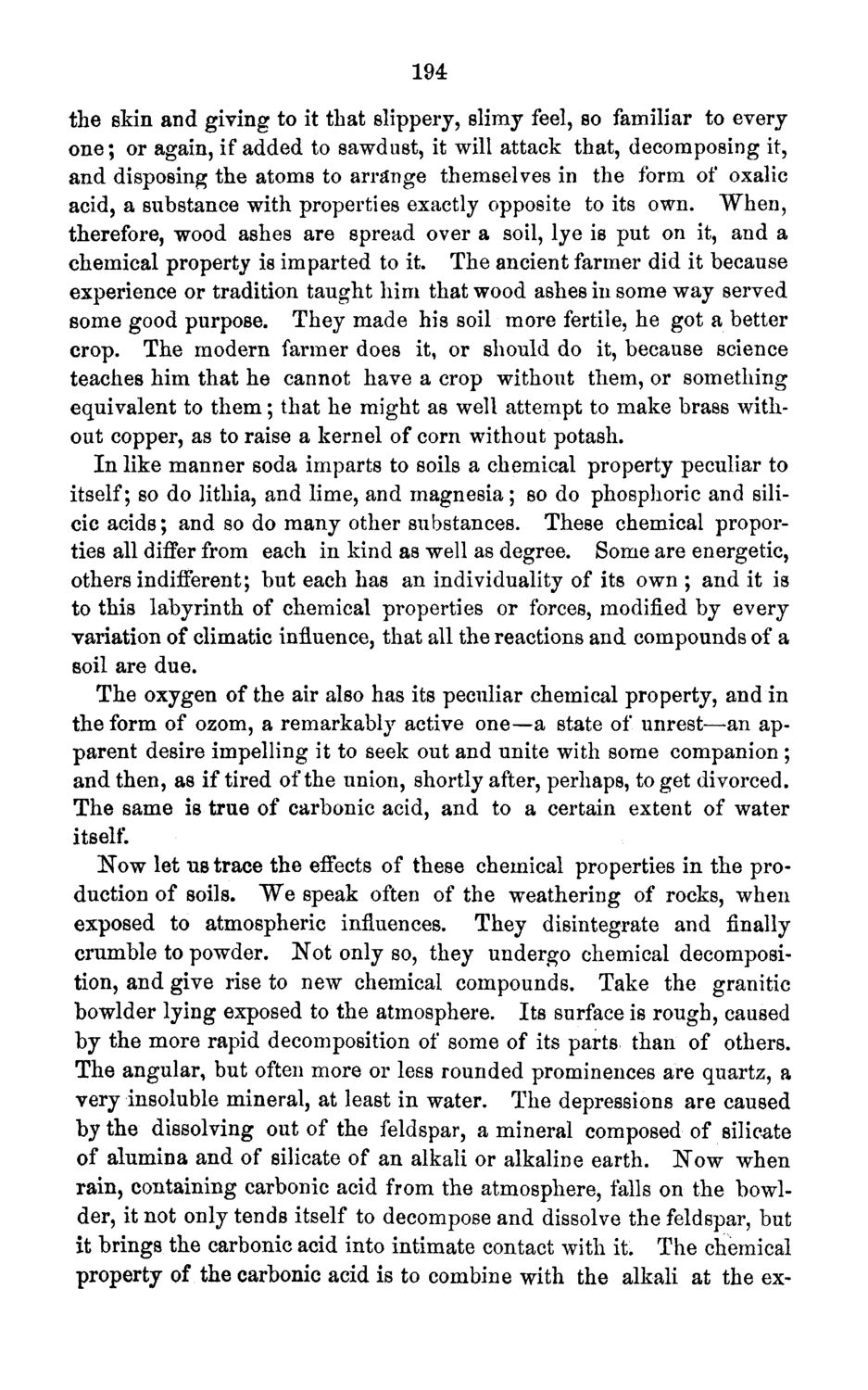| |
| |
Caption: Board of Trustees Minutes - 1871
This is a reduced-resolution page image for fast online browsing.

EXTRACTED TEXT FROM PAGE:
194: the skin and giving to it that slippery, slimy feel, so familiar to every one; or again, if added to sawdust, it will attack that, decomposing it, and disposing the atoms to arrange themselves in the form of oxalic acid, a substance with properties exactly opposite to its own. When, therefore, wood ashes are spread over a soil, lye is put on it, and a chemical property is imparted to it. The ancient farmer did it because experience or tradition taught him that wood ashes in some way served some good purpose. They made his soil more fertile, he got a better crop. The modern farmer does it, or should do it, because science teaches him that he cannot have a crop without them, or something equivalent to them; that he might as well attempt to make brass without copper, as to raise a kernel of corn without potash. In like manner soda imparts to soils a chemical property peculiar to itself; so do lithia, and lime, and magnesia; so do phosphoric and silicic acids; and so do many other substances. These chemical proporties all differ from each in kind as well as degree. Some are energetic, others indifferent; but each has an individuality of its own ; and it is to this labyrinth of chemical properties or forces, modified by every variation of climatic influence, that all the reactions and compounds of a soil are due. The oxygen of the air also has its peculiar chemical property, and in the form of ozom, a remarkably active one—a state of unrest—an apparent desire impelling it to seek out and unite with some companion; and then, as if tired of the union, shortly after, perhaps, to get divorced. The same is true of carbonic acid, and to a certain extent of water itself. Now let us trace the effects of these chemical properties in the production of soils. W e speak often of the weathering of rocks, when exposed to atmospheric influences. They disintegrate and finally crumble to powder. Not only so, they undergo chemical decomposition, and give rise to new chemical compounds. Take the granitic bowlder lying exposed to the atmosphere. Its surface is rough, caused by the more rapid decomposition of some of its parts than of others. The angular, but often more or less rounded prominences are quartz, a very insoluble mineral, at least in water. The depressions are caused by the dissolving out of the feldspar, a mineral composed of silicate of alumina and of silicate of an alkali or alkaline earth. Now when rain, containing carbonic acid from the atmosphere, falls on the bowlder, it not only tends itself to decompose and dissolve the feldspar, but it brings the carbonic acid into intimate contact with it. The chemical property of the carbonic acid is to combine with the alkali at the ex-
| |